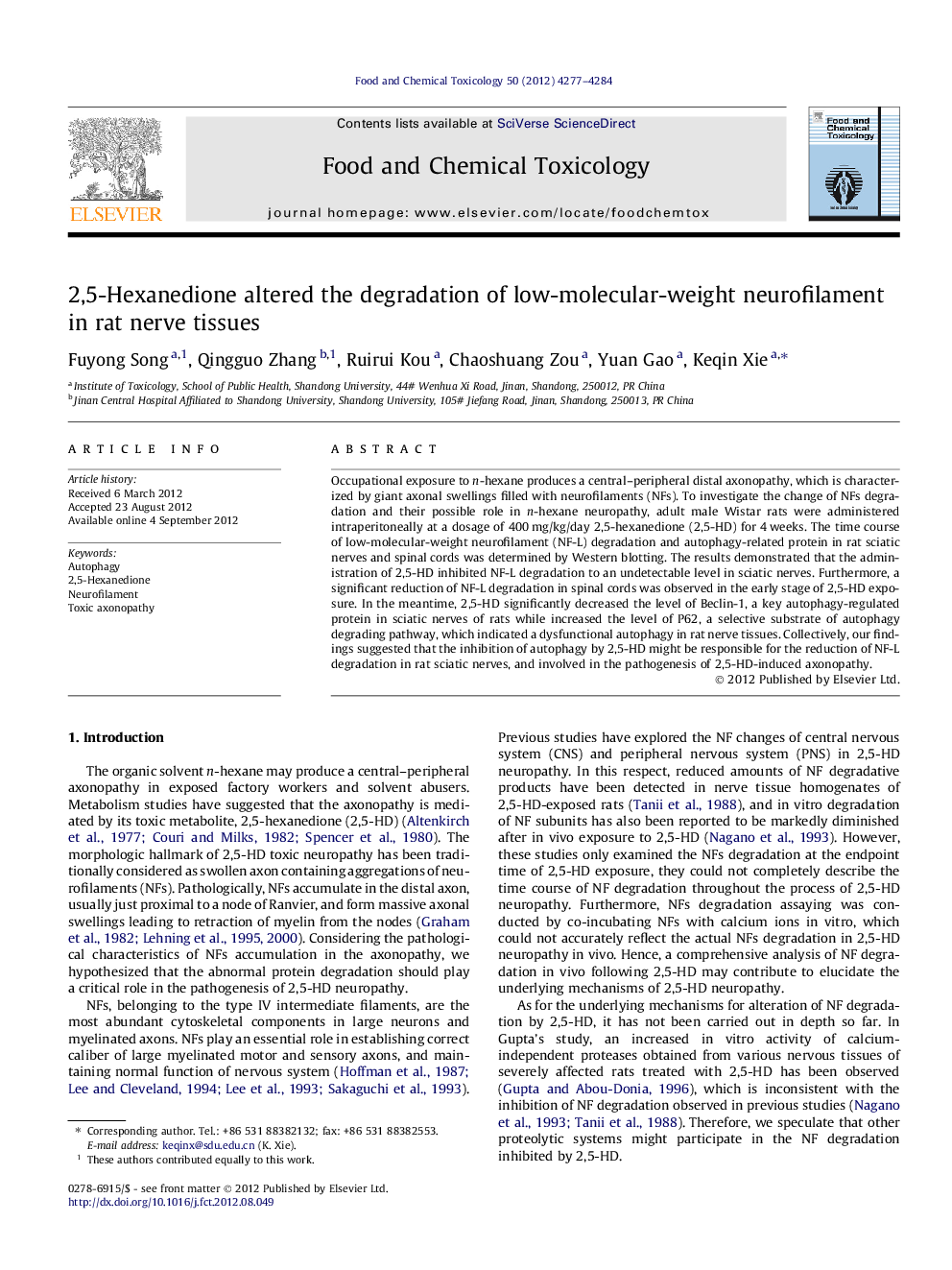| Article ID | Journal | Published Year | Pages | File Type |
|---|---|---|---|---|
| 5852008 | Food and Chemical Toxicology | 2012 | 8 Pages |
Occupational exposure to n-hexane produces a central-peripheral distal axonopathy, which is characterized by giant axonal swellings filled with neurofilaments (NFs). To investigate the change of NFs degradation and their possible role in n-hexane neuropathy, adult male Wistar rats were administered intraperitoneally at a dosage of 400Â mg/kg/day 2,5-hexanedione (2,5-HD) for 4Â weeks. The time course of low-molecular-weight neurofilament (NF-L) degradation and autophagy-related protein in rat sciatic nerves and spinal cords was determined by Western blotting. The results demonstrated that the administration of 2,5-HD inhibited NF-L degradation to an undetectable level in sciatic nerves. Furthermore, a significant reduction of NF-L degradation in spinal cords was observed in the early stage of 2,5-HD exposure. In the meantime, 2,5-HD significantly decreased the level of Beclin-1, a key autophagy-regulated protein in sciatic nerves of rats while increased the level of P62, a selective substrate of autophagy degrading pathway, which indicated a dysfunctional autophagy in rat nerve tissues. Collectively, our findings suggested that the inhibition of autophagy by 2,5-HD might be responsible for the reduction of NF-L degradation in rat sciatic nerves, and involved in the pathogenesis of 2,5-HD-induced axonopathy.
⺠2,5-HD resulted in a significant reduction of NF-L degradation in rat nerve tissues. ⺠2,5-HD resulted in a significant change of autophagy-related proteins in rat nerve tissues. ⺠The disruption of autophagy activity might be involved in the pathogenesis of 2,5-HD-induced axonopathy.
